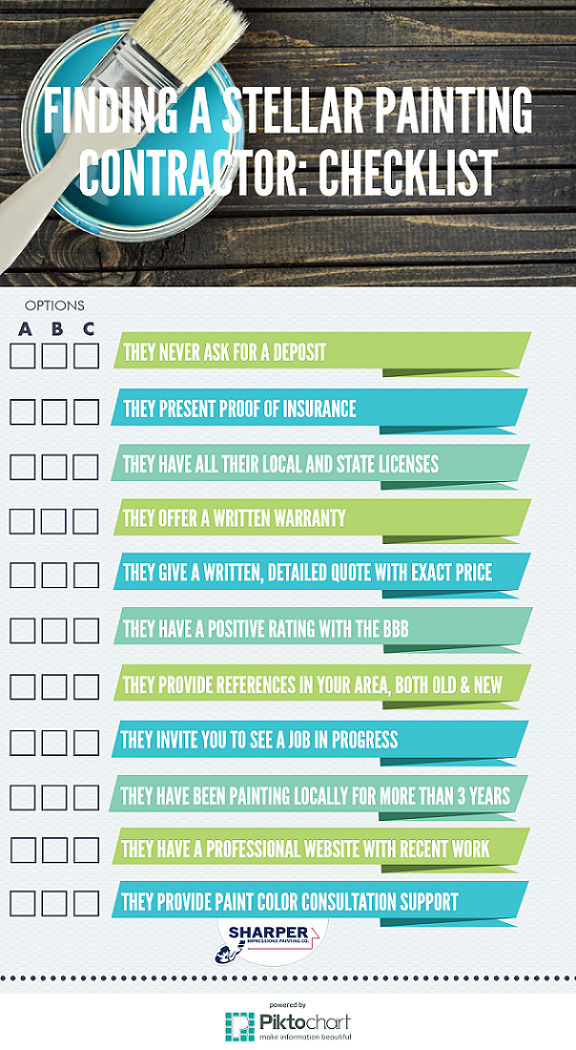Discover Why Low-VOC Paints Are Coming To Be Necessary For Healthier Homes, But Are Their Drawbacks Worth The Benefits? Discover The Truth Inside!
Discover Why Low-VOC Paints Are Coming To Be Necessary For Healthier Homes, But Are Their Drawbacks Worth The Benefits? Discover The Truth Inside!
Blog Article
https://residentialpaintersnearme64208.newbigblog.com/39419990/grasping-the-art-of-paint-touch-ups-rests-on-meticulous-detail-and-professional-approaches-learn-exactly-how-to-create-seamless-surfaces -Husum Birk
When you consider painting your home, you could neglect the significance of the paint's composition. Low-VOC paints are made to decrease indoor air contaminants, making them a smarter selection for your family's health and wellness and the atmosphere. While they come with certain drawbacks, like longer drying times, they also provide contemporary aesthetic appeals and improved efficiency. You could ask yourself if the benefits truly exceed the downsides, especially when you're aiming for an elegant finish. Understanding the full scope of low-VOC alternatives can change your perspective on your next paint job.
Understanding Low-VOC Paints
When you select low-VOC paints, you're selecting an item that produces less unstable natural compounds, which can be harmful to both your health and wellness and the atmosphere.
VOCs are chemicals located in numerous paint products that can vaporize right into the air and contribute to indoor air contamination. By picking low-VOC alternatives, you're minimizing the number of these exhausts, making your space much safer.
Low-VOC paints usually have 50 grams per litre or less VOCs, compared to traditional paints that can include up to 250 grams per litre. This means that when you paint your home with low-VOC items, you're not simply choosing for aesthetic appeals; you're additionally taking an action in the direction of a healthier indoor atmosphere.
https://www.kcur.org/arts-life/2022-12-31/a-guide-to-the-home-and-studio-of-thomas-hart-benton-kansas-citys-most-prolific-painter can be found in a variety of surfaces and shades, so you will not have to compromise on design. They appropriate for both exterior and interior tasks, providing durability and protection like their standard counterparts.
And also, several suppliers are now concentrating on creating low-VOC formulas without compromising performance. Understanding low-VOC paints encourages you to make informed choices for your home and wellness while contributing to environmental preservation.
Benefits of Low-VOC Options
Why select low-VOC alternatives for your painting jobs? To begin with, they're far better for your health and wellness. Low-VOC paints send out less unstable organic compounds, which indicates you minimize your direct exposure to damaging chemicals. This is especially vital if you're painting indoors or have children and animals at home.
You'll also appreciate the environmental advantages. These paints contribute less to air pollution, making them a greener option. By selecting low-VOC alternatives, you're sustaining lasting techniques and helping to create a much healthier earth.
One more perk is the boosted indoor air high quality. Low-VOC paints help maintain fresher air in your home, which can lead to a more comfortable living room.
And also, lots of low-VOC paints are equally as durable and resilient as traditional alternatives, so you will not give up quality for safety.
Finally, you'll locate a wide variety of colors and finishes readily available in low-VOC solutions, so you can still achieve the look you desire without jeopardizing on your wellness or the setting.
Selecting low-VOC paints is a wise, accountable decision for your painting jobs.
Potential Disadvantages to Take Into Consideration
While low-VOC paints provide countless benefits, there are some possible downsides to bear in mind. One considerable problem is their efficiency compared to conventional paints. Low-VOC options may not constantly supply the very same degree of durability and insurance coverage, which can lead to more regular touch-ups or a need for extra coats. This can be discouraging and lengthy throughout your paint task.
Another issue is the drying out time. Low-VOC paints commonly take longer to dry than their high-VOC counterparts, which can prolong your job timeline. If you're on a limited timetable, this may be a disadvantage to take into consideration.
You must also realize that low-VOC paints can sometimes have a different finish or texture. If you're going for a particular visual, ensure to evaluate examples to ensure the result satisfies your expectations.
Lastly, while low-VOC paints are normally much safer, they can still release some fumes. Proper air flow is necessary during and after application, so be prepared to air out your area efficiently.
Conclusion
To conclude, low-VOC paints are a clever selection for any person aiming to create a much healthier home setting. They decrease interior air pollution and are safer for your family members, specifically if you have kids or pets. While you could take care of more constant touch-ups and longer drying times, the benefits much outweigh these disadvantages. With elegant alternatives readily available, changing to low-VOC paints is an action towards lasting living that you won't regret.
